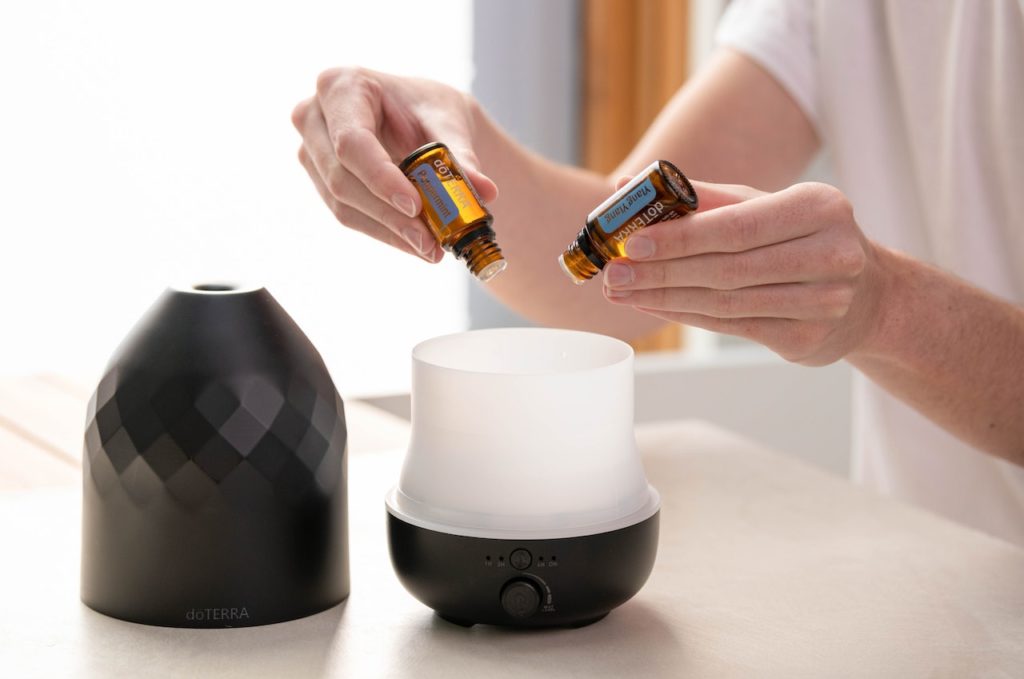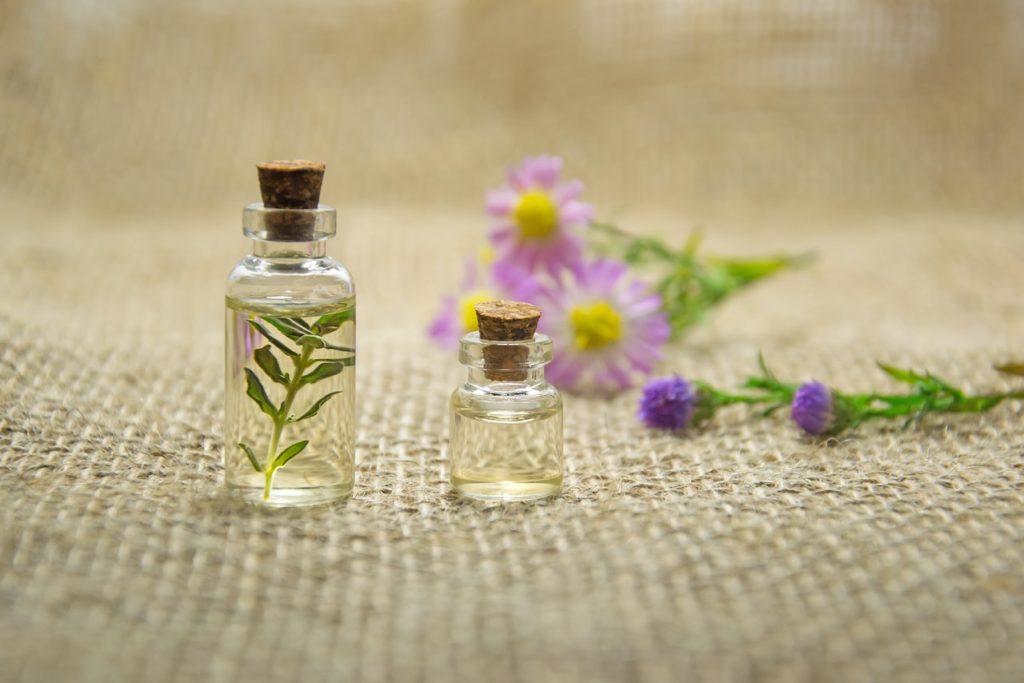If you have come across essential oils, you may be wondering like I did how to use them. What are the different uses of essential oils? There are a few different ways that they can be used and some important dos and don’ts to keep in mind. In this guide, we will look at how to use essential oils topically and with a diffuser. We’ll also talk about how to use them safely and effectively.
How do I apply essential oils?
Your application of the essential oil will be determined by the oil you pick and your goal in using it: for example do you want it to improve your mood?
The use of different essential oils is said to have different effects. Essential oils, such as lavender, chamomile, basil, frankincense, and bergamot, are reported to have a soothing impact and may aid in anxiety relief, others like peppermint oil are stimulating and are said to assist people suffering from depression.
Before using any essential oils it is always a good idea to do your research and talk to knowledgeable aromatherapists or those with essential oil experience.
There are many great books on the market that can provide further information to help you choose and make the best use of different essential oils to meet your needs.
Make note of the precautions for each essential oil and application technique. We have some pointers and examples on this, but it’s vital to properly dilute the oils, consider your reactions, and closely observe for any negative effects.
Methods of diffusing essential oils
1. A diffuser
Essential oils are put in this device, sometimes with water (check the instructions), and often with heat to encourage them to evaporate. This is a simple and effective technique to add the scent of an essential oil to a space, such as your living room or in a yoga class, for example.
Caution: Essential oils should never be burned directly because the chemical structure is drastically altered by incineration.

2. Dry evaporation
A few drops of essential oil are placed on a cotton ball or tissue and allowed to evaporate into the air. Squeeze the cotton ball if you want a stronger scent. If you want to achieve a lighter, more consistent exposure, simply keep the cotton ball beside you (for example, on your desk next to your computer).
3. Steam
A few drops of essential oil are put into a bowl of steaming water, which quickly evaporates the liquid.
Place a towel over your head and a bowl of water with essential oil droplets, then breathe deeply. The high concentration of this approach, which uses more than 1-2 drops, may be overwhelming. When utilizing this method, keep your eyes shut. This can be an effective treatment for a cold and a blocked nose.
4. Spray
Drops of essential oils are sprinkled into a water-based solution, mixed, and sprayed into the air to deodorize a space or create a mood.
For example, some like to spray a solution of pine or citrus oils to create a holiday ambiance, while others like to use a solution of peppermint oil to stimulate alertness.
You could also use a mixture of water and your favorite essential oil as a yoga mat cleaner. It’s critical to shake the bottle before spraying so that the solution is evenly distributed and not just water.
How do I apply essential oils topically?
Essential oils may also be applied topically to the skin.
Caution: It’s vital to note that most essential oils can’t be applied directly to the skin unless they’re diluted.
How do I prepare a solution?
As a general rule, essential oils should be diluted in a carrier substance (such as vegetable or nut oil or water) no more than three to five times.
To generate a 3% solution, you’d use one teaspoon (5ml) of carrier and three drops of pure essential oil. This would result in a 3% solution that could be applied to the body.
The 1% solution (one drop of essential oil in one teaspoon of carrier) is typically a safe concentration for massage or application over larger regions of the body. Using a weaker 0.25 percent solution (0.5 percent for toddlers) is advised for infants.
Mix by hand to achieve better results, and this also means that you have more control over the finished product.
What carrier oil should I use?
Natural foods shops or stores that specialise in natural bath and body goods will sell different carrier oils, or you may find larger supermarkets also sell some of the oils in their cooking section.
Sweet almond, apricot kernel, grapeseed, jojoba, and avocado oils are some examples of organic and cold-pressed carrier oils.
These oils have no distinct odor of their own. They should be refrigerated until needed and discarded if they develop an unpleasant or rancid odor. If properly stored, oils may last a year or more if kept in the refrigerator.
How do I use essential oils topically?
There are a few different techniques to use essential oils topically. These include using a compress, gargling with them, adding them to a bath, or using them as a massage oil.
1. Compress
A diluted essential oil is applied to a dressing or directly to the afflicted region using a liquid carrier (water or oil). Heating or chilling the remedy can be used as desired.
To create a compress, add a few drops of ginger (Zinziber officinalis) essential oil to the water and mix it; then soak a cloth in the solution and apply it to your stiff joint. As needed, more heat may be applied.
2. Gargle
Essential oil is dripped into water. You combine the ingredients, then gargle and spit out the solution. For a sore throat remedy, one drop of tea tree oil can be dripped into a glass of water and gargled.
Caution: The solution should not be swallowed.
3. Bath
Drops of essential oils are added to bath water in a dispersant immediately before entering the tub. This method allows for skin and inhalation of the volatile essential oil, as well as absorption through the skin. A little handful of full-cream milk can be used as a dispersant.
One part baking soda, two parts Epsom salts, and three parts sea salt may be combined to make a soothing bath base. Add six drops of real lavender essential oil to approximately two tablespoons of this mixture and stir it into a bath before coming in.
4. Massage
A natural carrier oil is combined with drops of essential oil and gently massaged onto the skin. Adults should avoid massage blends that contain more than 1% essential oils (one drop in a teaspoon).
For children, concentration should not exceed 0.25% for infants, 0.5% for toddlers aged 6 months to 2 years, and 1% for children aged 2 years and above. The choice of essential oils when performing a massage is dependent on the outcome you are looking for.

